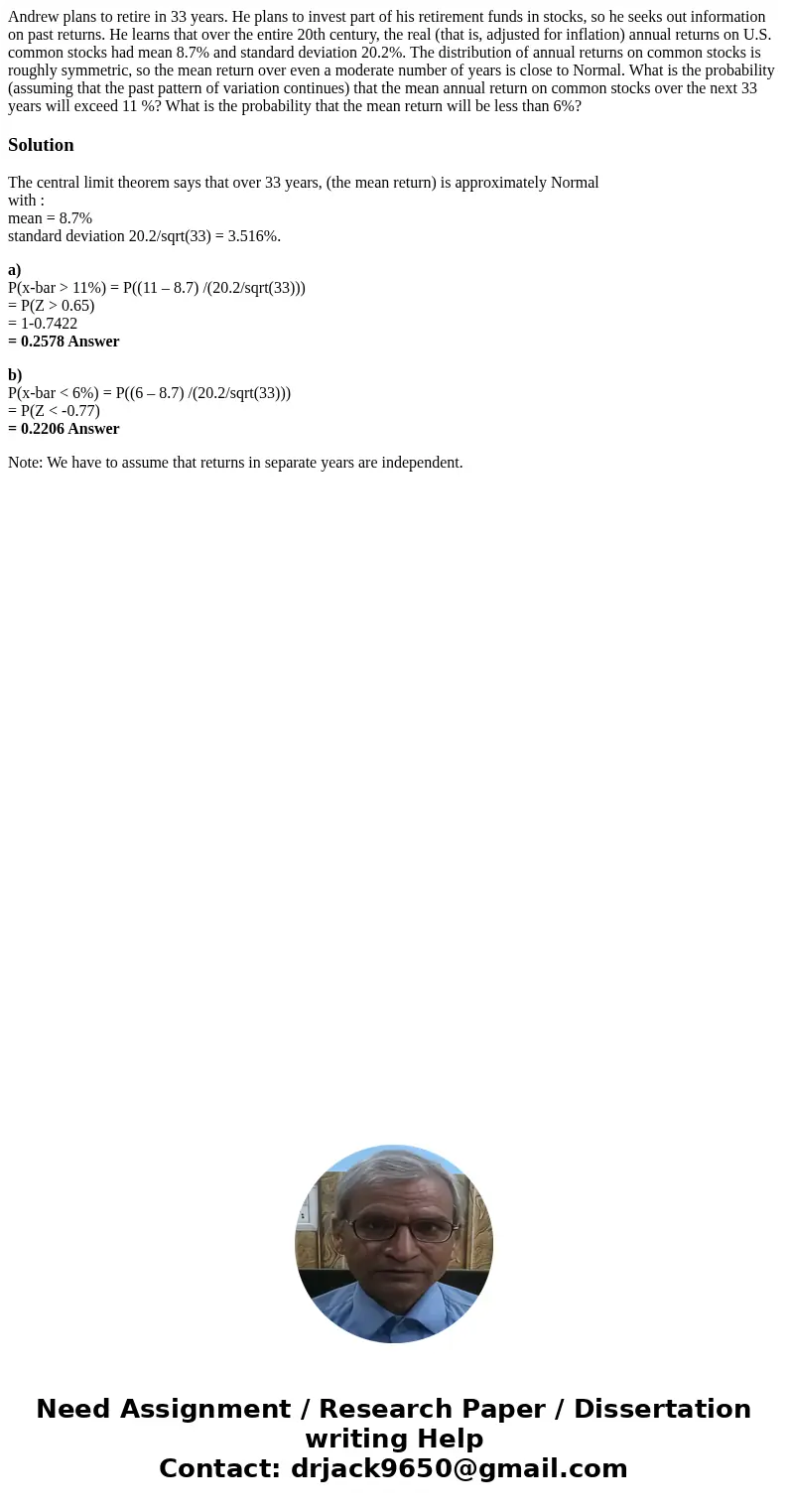Andrew plans to retire in 33 years He plans to invest part o
Andrew plans to retire in 33 years. He plans to invest part of his retirement funds in stocks, so he seeks out information on past returns. He learns that over the entire 20th century, the real (that is, adjusted for inflation) annual returns on U.S. common stocks had mean 8.7% and standard deviation 20.2%. The distribution of annual returns on common stocks is roughly symmetric, so the mean return over even a moderate number of years is close to Normal. What is the probability (assuming that the past pattern of variation continues) that the mean annual return on common stocks over the next 33 years will exceed 11 %? What is the probability that the mean return will be less than 6%?
Solution
The central limit theorem says that over 33 years, (the mean return) is approximately Normal
with :
mean = 8.7%
standard deviation 20.2/sqrt(33) = 3.516%.
a)
P(x-bar > 11%) = P((11 – 8.7) /(20.2/sqrt(33)))
= P(Z > 0.65)
= 1-0.7422
= 0.2578 Answer
b)
P(x-bar < 6%) = P((6 – 8.7) /(20.2/sqrt(33)))
= P(Z < -0.77)
= 0.2206 Answer
Note: We have to assume that returns in separate years are independent.

 Homework Sourse
Homework Sourse